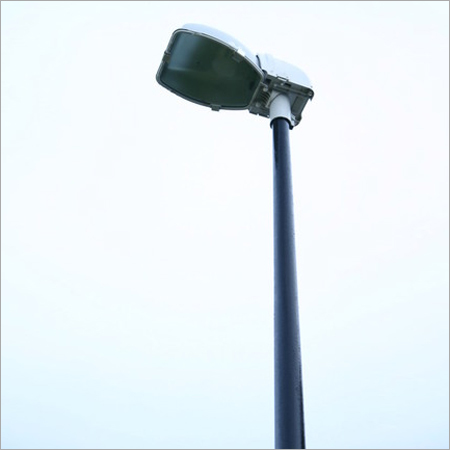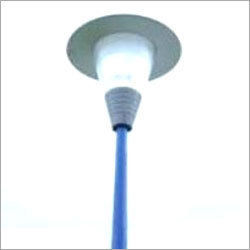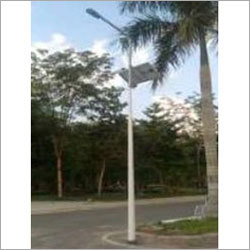FRP Pole
Price 3000.00- 400000.00 INR/ Piece
FRP Pole Specification
- Coating Type
- Polyester Resin Coating
- Density
- 2.0 Gram per cubic centimeter(g/cm3)
- GSM
- 500 – 900 GSM
- Temperature
- -40°C to +80°C
- Usage & Applications
- Utility Poles, Parking Lot Poles, Garden Lighting, Rural Area Poles, Electrical Distribution
- Thermal Conductivity
- Low (0.25 W/mK)
- Thickness
- 3mm to 10mm (customizable)
- Glass Type
- E-glass Fiber
- Shape
- Round, Conical, Tubular
- Material
- Fiber Reinforced Polymer (FRP)
- Application
- Street Lighting, Outdoor Illumination, Power Distribution, Communication Lines
- Technique
- Pultrusion Molding, Hand Layup
- Surface Treatment
- UV Resistant, Gel Coated, Smooth Finish
- Dimension (L*W*H)
- Available in Various Sizes (customizable)
FRP Pole Trade Information
- Minimum Order Quantity
- 10 Units
- Supply Ability
- 1000 Units Per Day
- Delivery Time
- 3 Week
About FRP Pole
Durable & Lightweight Design
FRP Poles are significantly lighter than steel or concrete alternatives, making them easier to transport and install. Despite their low weight, they offer robust resistance to wind loads up to 180 km/h, ensuring reliable performance in varied climates. Their structure is engineered for a lifecycle exceeding three decades, minimizing replacement frequency and long-term costs.
Customizable to Your Needs
Customize your FRP Pole for any application including utility poles, street lighting, parking lots, or garden illumination. Choices include length, diameter, color, and shaperound, conical, or tubular. Specialized treatments like UV-resistance, gel coatings, and fire retardancy are available upon request to match your environmental and safety requirements.
FAQs of FRP Pole:
Q: How are FRP Poles installed, and what makes the process efficient?
A: FRP Poles are lightweight, allowing for easy handling and reduced transportation costs. Their manageable weight and available sizes mean installation typically requires less manpower and equipment than steel or concrete poles, streamlining the process on-site.Q: What benefits do FRP Poles offer compared to traditional poles?
A: FRP Poles provide superior corrosion resistance against chemicals, moisture, and salinity. Their high dielectric strength makes them excellent electrical insulators, while their long lifecycle, minimal maintenance, and negligible need for painting distinguish them as cost-effective, sustainable alternatives.Q: Where are FRP Poles commonly used and who supplies them in India?
A: These poles are commonly used for street lighting, outdoor illumination, power distribution, communication lines, and in parking lots or gardens. In India, they are distributed, exported, manufactured, and supplied by authorized traders and producers specialized in FRP technology.Q: What customization options are available for FRP Poles?
A: Customers can tailor the poles color (grey, black, or custom shades), length, diameter, thickness (3mm10mm), GSM (500900), and shape. Additional features such as fire retardancy, UV-resistant gel coating, and smooth finish can be requested to meet specific project needs.Q: How do FRP Poles withstand harsh weather and environmental conditions?
A: Engineered with E-glass fibers and coated with polyester resin, FRP Poles resist temperatures from -40C to +80C, strong winds up to 180 km/h, and corrosive environments. Their UV-resistant, gel-coated finish further protects against sun exposure, ensuring longevity even in demanding environments.Q: What standards do FRP Poles comply with?
A: These poles comply with international and domestic standards including IEC, ASTM, and IS, ensuring reliable quality, safety, and performance across all applications.

Price:
- 50
- 100
- 200
- 250
- 500
- 1000+
More Products in FRP GRP Pole Category
GRP Lighting Pole
Price 3000.00- 400000.00 INR / Piece
Minimum Order Quantity : 10 Units
Coating Type : UVprotected polyester coating
Density : 2.1 Gram per cubic centimeter(g/cm3)
GSM : 350450 GSM
Dimension (L*W*H) : Customizable (standard options available: 6m, 8m, 10m height)
FRP-GRP Pole
Price 3000.00- 400000.00 INR / Piece
Minimum Order Quantity : 10 Units
Coating Type : Anticorrosive Epoxy
Density : 2.0 Gram per cubic centimeter(g/cm3)
GSM : Typically 200400 GSM
Dimension (L*W*H) : Varies (commonly 3m, 6m, 9m length)
FRP Lighting Pole
Price 3000.00- 400000.00 INR / Piece
Minimum Order Quantity : 10 Units
Coating Type : UVresistant, anticorrosive coating
Density : 2.0 Gram per cubic centimeter(g/cm3)
GSM : Varies by design, typically 450–900 GSM
Dimension (L*W*H) : Customized, commonly 3 to 12 meters in length

 English
English Spanish
Spanish French
French German
German Italian
Italian Chinese (Simplified)
Chinese (Simplified) Japanese
Japanese Korean
Korean Arabic
Arabic Portuguese
Portuguese Send Inquiry
Send Inquiry



 Send Inquiry
Send Inquiry Send SMS
Send SMS Call Me Free
Call Me Free
